#aac examples
Explore tagged Tumblr posts
Text
Add an aac tour in a reblog!!!
Feel free to include the outside of your device! Low tech and high tech appreciated
#actually autistic#autism#autistic adult#aac communication#msn autism#proloquo2go aac#aac user#coughdrop aac#aac app#high tech aac#aac device#aac#aac apps#aac board#aac community#aac examples#aac folders#aac pages#aac positivity#aac symbol#aac emoji#aac symbols#aac talk#aac video#adult aac user#full time aac user#low tech aac#aac image#aac emote#aac icon
40 notes
·
View notes
Text
This is Pixies home page . all buttons with a black corner are links to other pages .
the Line of white buttons down middle of page and across the bottom of page , with no pictures , are word predictions

This is the most important page , it have almost all links to pages Pixie use most .

For pages / categories with lots lots words , Pixie sort words in to alphabet , like this the action words .
all the white buttons , with no pictures , are more word predictions

Pixie hope is helpful ! Pixie be happy to show more pages or try answer questions if it be helpful !
Pixie be working with speech therapist on Pixies AAC device for long long time now . very much remember how overwhelming it all was to start , Even with wonderful new speech therapist .
We're struggling to set up our aac. Has anyone got any advice to help us? We've only ever used low tech aac before
#high tech aac#aac app#aac device#aac#aac user#full time aac user#grid for ipad#aac pages#aac examples
163 notes
·
View notes
Text
just had a very transparent reminder that practice does create improvement. my sister asked me to make a sign language guide for my 5yo nephew's schoolteachers. and maybe i coulda printed a buncha shit out, but my nephew is 5 and gives some of his signs a personal flair that the internet diagrams just doesn't capture. so i spent a whole day hand-drawing his most commonly used signs, and buddy, if you've ever struggled to draw hands, you can imagine the difficulty there is in drawing hands signing shit. point is, though, i was given the opportunity to mark the clear different in the quality of my hand-drawing skills from the first sign card to the last.
so yeah if you want to rapidly improve your hand-drawing skills, try to hand-draw a sign language guide using pictures of your own hands forming the signs, and internet sign drawings that range from excellent to complete dog-shit (no shade tho I almost cried trying to draw the sign for "friends" that one's a real bitch.
#drawing#ASL#also my sister works at the school and she said his teachers were legit close to tears when they pulled the guide out of his backpack#apparently they don't often get this kind of assistance without even asking from a guardian#sister was also recently grousing about parents who were trying to convince the school to...get this...#to NOT give their daughter access to the AAC device the school provides so she's forced to talk to communicate#oh and an AAC is basically an ipad with text to speech and little pictures kids can tap to communicate#my nephew has one on him 24/7 because he can't talk#so far the doctors are pretty sure it's a rare kind of oral and verbal apraxia#so basically difficulty with fine motor control of his mouth necessary for speech. he also struggles to chew due to this#but yeah. lots of disabled kids use these devices to communicate. nonverbal autistic kids is probably the example most ppl know best#although there's a ton of kids with more ambiguous diagnoses who use them too#but yeah my hand drawing skills went from a 2 to like a 5 by the time i finished that guide
4 notes
·
View notes
Text
Be nice and don't mock tumblr users that communicate differently.
Examples:
1.) Typing quirks
2.) No punctuation
3.) Random Capitalisation
4.) Long run on sentences
5.) Frequently misspelled words
6.) Missing spaces between words
7.) Repeating words and sentences
8.) Posts audios and videos instead of typing
9.) Express themselves through custom emojis
10.) Use an AAC (Augmentative and alternative communication) device
Some users have intellectual disabilities, use speech to text, struggle with grammar, have hand tremmers, have high support needs, etc.
Regardless of how they communicate and their reason why, they still deserve respect. They are trying their best.
#intellectual disability#disability#communication styles#disabled community#communication#aac user#aac device#autism awareness#disability awareness#typing quirk#disability advocacy#poor grammar#grammar nerd#actually neurodivergent#actually neurodiverse#its the neurodivergency#neurodivergent#neurodiversity#autistic#autism#disability community#neurodivergent community#judgment free zone#no judgement#adhd#adhd brain
4K notes
·
View notes
Text
hi this is your very friendly reminder that low-tech and no-tech AAC is just as valid as high-tech AAC
and also that even though high-tech devices and tablets can be life changing technology for many people, not everyone...
can use them
have access to them
want to use them
some examples of low-tech AAC:
core boards
flipbooks
picture/symbol cards
communication cards
alphabet/letter boards
pen and paper
some examples of no-tech AAC:
nodding/moving head
pointing
blinking or looking in certain directions
hand signals like a thumbs up
body language such as moving or kicking legs
other gestures like clapping, snapping, making non-word vocal sounds
here is a link about no-tech AAC (written in mostly plain language):
#actually autistic#actually semiverbal#aac user#aac#low tech acc#no tech aac#disability#autism#high tech aac#aac device#aac cards#semiverbal#nonverbal
809 notes
·
View notes
Text
Pixie lost a question tumblr post and not sure exactly what was ask . took Pixie so so long time to answer . Weeks of work … So here is answer with no question . so sorry !
A few things about being actually nonverbal ( Never able use mouth words at all , ever … “going nonverbal” is NOT A THING ) .
1- AAC Very slow compare to mouth words . Can take Pixie 10 or more minutes just to give answer to “ hello how are you ?“ Longer word things , like simple blog post , can take weeks to months . people are never that patient , even otherwise good people can just not wait , not without practice .
2- being nonverbal , needing AAC to Communicate all the time , make many things much harder or not possible at all , even with help .
example -
Most medical professionals Pixie have known will not accept communication with AAC device As genuine communication . And ! also will not accept communication from someone else , what is not biological parent , unless AAC user verbally ( not with AAC device ) give permission . Or . personally fills out in writing many forms giving permission . Even then . Is not work every time .
is Same for many many other things . banks and government agencies and schools and businesses and organizations of all sorts .
3- Geting emergency services like ambulance or Police or Firefighter services require speaking . so , need someone else help by calling .
4- many programs for disabled people will not allow access to programs if person cannot *speak* independently . ( Pixie lucky have found some good programs , in big city really help have more programs to choose from )
Pixie also have cognitive disability and moderate to severe language difficulties . but ! even people what just not can speak And not have anything else disabling ( unlike Pixie ) Still need so much more help just because of not able speak ever .
#asks and answers#actually nonverbal#nonverbal#nonverbal autism#aac user#full time aac user#cognitive disability#autism#actually autistic#actually disabled
745 notes
·
View notes
Note
Is there any list of stuff you wanted to see more in autistic representation? I'm autistic and I'm quite "stereotype material": white savant male good at STEM and who's not aroace but don't want a partner, and it bugs me that it's always like that, so I wanted to know what other people would like to see when I try writing autistic people.
Hi!
Honestly, I just want more autistic characters in general. There are hardly any!
Here are some things that I have never seen represented:
characters with mid-high support needs, both related and unrelated to autism
characters who use AAC [link to post about high/low/no tech aac] and who struggle to communicate
characters with cerebral palsy, tourette's, intellectual disability, or any other common comorbid condition that's not ADHD
characters who don't live with their parents
characters who don't infodump or know a lot of facts about their special interests, just that their interests are the things they engage with
characters whose special interests aren't "useful" to their life
characters with "unusual" sensory needs (for example i always see characters who hate loud noises and bright lights, but i know many autistic people in real life who are not bothered by those or actively seek them out)
characters misdiagnosed in childhood with ODD or another common misdiagnosis, or neglected as a "difficult kid" even if they have higher support needs
characters who use gait trainers, adaptive strollers, or manual tilt in space chairs
characters who have a supportive community or know multiple other autistic people
adult characters in day programs
queer characters, especially ones whose sexuality or gender is difficult to separate from their autism
characters who have harmful stims and not only when they're upset
characters who are not big. (this might seem weird but there are a surprising number of tall/large/imposing autistic characters, especially those with higher support needs; that's not what every autistic person looks like!)
So Many More!! If every autistic writer made a character who was just like them, each one would have at least one autistic trait that has not been represented before.
Mod Rock
Hello!
To be honest, just characters that don't generalize autism. On one hand you have "representation" that's all "all autistics are boys, 12 or under, who like trains and barely speak" and on the other you have "hi, I'm a very low/no support needs autistic who is very socially acceptable and lol like imagine liking trains instead of having Real and Cool special interests like me" (sometimes it's overdone to the point the character quite literally doesn't have any autistic traits). Too much autistic representation made to combat a specific stereotype just ends up shitting on the people who do in fact exist. Some people say that "ahh all autistic rep is those damn boys with they trains!!" but I don't think anyone would say that this kind of representation is actually good or thoughtful - not because of the train or the boy, but because these characters are barely treated as humans most of the time.
We need more complex representation of all parts of the spectrum, from successful savants in STEM to "obviously disabled" autistics who are intellectually disabled, have huge mobility delays, and stim at all times, to "everyday" people who just have their special interest, don't get social cues, and are kinda awkward.
I'll take a "stereotypical" character that's actually explored and developed properly over a cardboard that's there to be a "subversion of autistic stereotypes" any day.
mod Sasza
Hi,
I largely agree with the mods above. Mostly I want autistic characters treated like people and not plot devices.
But I wanted to say specifically: I want autistic characters of color. I am basically begging to see more autistic characters who are not just white people. We exist too, and really I barely see characters who have autism and aren't white.
Also, I want to see autistic characters with romantic and/or sexual partners. I feel like autistic characters are often desexualized or infantilized in a way that has them only rarely having a partner.
And I also want to see autistic characters whose special interest[s] isn't "useful" to their life, it's just there. Just part of their life. Like, it isn't their job. I feel like that's often a default.
Like Sasza said, we really need more complex and thoughtful representation of the spectrum. I don't need 'subversion' of autistic stereotypes, not particularly.
The subversion itself would be an autistic character being more than a plot device and portrayed with thought and care to the things that make their life difficult, the ways their autism affects the way they interact with others and the world, the things that make the person unique and themselves, and not just focusing on one of those aspects and ignoring everything else.
Hope this helps,
mod sparrow
320 notes
·
View notes
Text
Tips for Setting Up AAC:
Transcript: "I have been seeing many people on here saying they feel overwhelmed or confused about how to set up their AAC devices. I thought I would give a tour of my device to give people a place to start with putting together their own pages.
To start with, this is my core words page, it is the first thing I see on the app when I open it. The core words page has the most commonly used words in the English language. My grid has sixty buttons on each page because that is what is accessible to me, but you want to have as many buttons as you can access on each page to make navigating as quick as possible.
There are two main ways I know of that AAC devices are organised. The first is by parts of speech, the second is by category. I use bits of both in my device.
For example, I have folders for nouns, verbs, adjectives and adverbs, and little words like conjunctions and modifiers, which are parts of speech, but I also have folders for time, feeling, and common expressions, which are categories.
Here us my describing words page. It has a lot of common adjectives, and also has sub folders for specific types of adjectives.
"High"
"Below"
"Together"
"Funny"
"Weak"
"Whole"
"Rainbow"
Here is my feeling page. It is alphabetized and colour-coordinated by letter so that I can quickly find the colour of the letter I want without having to look through the whole list.
"I feel"
"Happy"
"Delighted"
"Confused"
"Overehelmed"
"I don't know what I'm feeling"
"I have lots of big feelings right now"
My quick fire page has whole phrases instead of single words.
"Me too"
"This device is my talker, it helps me communicate"
"Stop!"
"The time is 1:47 pm"
"I like you"
"Congratulations"
"That is frustrating"
Blithering idiot!"
"Not my circus, not my monkeys"
Under my core words page are more specific topic folders. They have a mix of nouns, verbs, and adjectives that are specific to the topic.
For example, here is my food page.
"Food"
"Breakfast"
"Hot dog"
"Coconut"
"Herb"
"Pitcher
"Thaw"
Some of my topic folders also have phrases, like my errands folder.
"I'm just looking, thanks"
"Do you have"
"How much is that?"
"Credit"
"Card"
The last thing I want to add is that AAC can have more uses than just communicating. I have a folder of recipes that my care providers help me put together to help me learn cooking skills.
"Let's make brownies"
"10 tablespoons butter"
"1 1/4 cup sugar"
"1/ teaspoon salt"
"Preheat oven to 325 degrees"
"Grease 8 by 8 baking pan"
"Mix butter, sugar, cocoa powder, vanilla"
"Mix until smooth"
"Bake for 20 to 25 minutes"
You can make folders for things like grocery lists, routine, social stories, anything you want.
Anyway, I hope this tour was helpful, if you have any questions just ask.
"Questions"
"Thank you. For. Watching"
Thank you for watching.
386 notes
·
View notes
Note
Hello!!! I hope you don't mind doing this one,
Can you help me write a traumatized person who's having trouble talking because of past trauma? (They can still interact with people, but only with signs and movements, not voice) and also a little anxious
Tell me if you need more details =)
How to Write a Mute / Non-Speaking Character
-> healthline.com
-> verywellhealth.com
-> descriptionary.wordpress.com
Types of Mutism:
selective mutism: having the ability to speak but feeling unable to.
organic mutism: mutism caused by brain injury, such as with drug use or after a stroke.
cerebellar mutism: mutism caused by the removal of a brain tumor from a part of the skull surrounding the cerebellum, which controls coordination and balance.
aphasia: when people find it difficult to speak because of stroke, brain tumor, or head injury.
What Causes Selective Mutism in Adults?
having another anxiety condition, like separation anxiety or social anxiety
experiencing physical, emotional, or sexual abuse
having a family history of selective mutism or social anxiety
having fewer opportunities for social contact
having an extremely shy personality
having a speech or language disorder, learning disability, or sensory processing disorder
parent-child enmeshment, or lack of clear boundaries in the relationship
traumatic experiences
Traumatic Mutism vs Trauma-Induced Selective Mutism
if you have traumatic mutism, you may be unable to talk in all situations following a trauma.
with trauma-induced selective mutism, you may find it impossible to talk only in certain situations-- for example, in front of the person who hurt you or in a setting that resembles the circumstances of your trauma.
Different Ways Individuals with Mutism May Choose to Communicate:
Nonverbal Communication: they may rely on facial expressions, gestures, eye contact, and body language to convey their thoughts, emotions, and intentions.
Writing or Typing: they may use a pen and paper, digital devices, or communication apps to write messages, notes, or responses.
Sign Language: they can convey meaning, emotions, and engage in complex conversations through hand signs, facial expressions, and body movements.
Augmentative and Alternative Communication (AAC) Devices: these devices provide individuals with a range of tools and technologies to support their communication needs. They can include speech-generating devices, picture boards, apps, or software that allows users to select words, phrases, or symbols to generate spoken or written output.
Communication Boards and Visual Aids: Communication boards or charts with pictures, symbols, or words can assist individuals in conveying their messages.
Assistive Technology: various assistive technologies, such as speech-to-text apps, text-to-speech programs, or eye-tracking devices that aid individuals with communication.
Tips on Writing a Mute / Non-Speaking Character:
Explore the vast array of nonverbal cues such as facial expressions, body language, gestures, and eye contact. Use descriptions to convey their intentions and reactions.
Utilize internal dialogue. Offer readers a window into their internal thought process, and turn their internal dialogue into a narrative that reveals their inner struggles, triumphs, and complexities so that reader can connect with the character.
Establish a communication system that is unique to your character (Sign language, written notes, telepathy in a fantasy setting, etc.). Having a communication system allows your character to interact with other characters and contribute to the narrative.
Surround them with Understanding Characters that can aid in communcation and fostering meaningful relationships.
Establish the Barriers/Conflicts They'll Experience. Don't forget to be realistic.
Your character is not defined by their inability to speak. Make sure you do not write stereotypes and cliches. Being mute is only one aspect of their identity rather than their defining trait.
Do your research! Seek out firsthand accounts, experiences, and perspectives. Check out online forums and resources to gain insights into their unique challenges, adaptations, and strengths.
If you like what I do and want to support me, please consider buying me a coffee! I also offer editing services and other writing advice on my Ko-fi! Become a member to receive exclusive content, early access, and prioritized writing prompt requests.
#writing prompts#creative writing#writeblr#how to write#writing tips#writing advice#writing resources#writing help#writing tools#how to write a mute character#how to write a non-speaking character#how to write characters
575 notes
·
View notes
Text
Tips for autistic higher support needs OCs!
Writing:
•many many violent meltdowns very often very inconvenient and very disabiling
•if you write an nonverbal charecter then if they can they should probably have high tech AAC and not sign language (unless Deaf or other specific circumstances maybe,
but remember sign language like BSL and ASL is part of Deaf culture,
its not a quick fix its an entirely new language
and it requires good fine motor skills
most nonverbal people struggle with atleast one of those)
and not just "does fine with no communication"
•challenging behaviors like elopment, SIB, harming others, feacal smearing, destructive behaviour
•make sure level 3s are severely impaired in communication,
because a level 3 would not be just not able to speak and no other communication issues
they would have severe impairing issues in language aswell and in initiating communication!
Much more complex than simply a lack of speech,
and remember a level 3 could be verbal but they must be severely impaired in communicating
Drawing:
•have a G tube,
complete or most food refusal is actually quite common in autistic people and in autistic babys
and a G tube is often for long term
NG/NJ tube also can be really overwhelming and intolerable
•visible comorbidies like Down syndrome for example or FASD
•drooling
•lack of eye contact/not looking at the direction of the people seeing your drawing
•headphones/ear defenders if the OC would be able to cope with that feeling
•a stuffie!
•SEN buggy, or wheelchair for elopment or other reasons such as a delay in walking, a gait trainer, walker and other mobility aids too
•wearing elopment harness
•wearing bright colours so if runs into traffic when eloping people can see
•wearing a top with a puzzle piece or im autistic on or something like that
#OC#OC ideas#autistic representation#higher support needs#higher support needs representation#nonverbal representation#writing inspiration#disability representation#writing inspo#actually nonverbal#actually nonspeaking#nonverbal#autism community#actually autistic#moderate support needs#moderate to high support needs#autism
225 notes
·
View notes
Text

My personal comparison of AAC apps I have used!
TD snap: My favorite, it is not free but does have a 60 day free trial! You can upload boards from their website onto your AAC, and also post, save, and switch home pages! Available offline!
Pricing: It has a free 60 day trial, but you can trial hop! You'd just have to download your boards onto your device, log out, make a new account, start a free trial, and re-upload your boards onto the app!
Customization: You can change buttons sizes, colors (any color possible), the text colors, boarder colors, rearrange the text box, move around the side bar, it's basically fully customizable! Including MP3 files!
Negs: Doesn't support gifs, hard to learn settings but makes sense after awhile! Only works on Ipad, not iphone.
Coughdrop: I used this for about 2 months on the free trial, and it is harder to customize but can make word art! Works on iphone and ipad!
Pricing: Costs money, not sure if you can trial hop!
Customization: A few colors to choose from, better voices IMO, supports gifs!
Negs: Images vanish after awhile if you dont back up, but backing up took me hours personally. Offline doesn't work with custom voices on ipads.
#actually autistic#autism#autistic adult#aac user#aac communication#aac community#aac emoji#high tech aac#aac board#aac positivity#aac apps#aac app#aac#aac examples#aac folders#aac pages#aac symbol#aac symbols#aac talk#adult aac user#full time aac user#low tech aac#td snap#aac emote#aac device#aac image
17 notes
·
View notes
Note
Hey! I'm writing a series with a character who is a sniper. She is a private hire and ends up meeting someone who works with shorter ranged guns and weapons.
I'm just wondering how they would differ when killing someone and what are the tells of each weapon. I want to make it clear that the weapons are different but I'm not sure what those differences are
So, something that stuck out to me originally, when reading this is, most snipers are going to have a close range PDW. Whether that's just their sidearm or something more substantial, they'd need to be proficient with something in close quarters if it comes to that.
Now, the hard part about answering this question in the abstract is that, almost everything associated with firearms is extremely date sensitive.
For example, if your CQB/CQC character was originally trained sometime in the late 90s to late 2000s (in a Western country), they'd have likely encountered Center Axis Re-lock. Outside of those 20 years, then that style hadn't seen widespread adoption, or had fallen out of favor.
For some specific film examples, Vincent (Tom Cruise) from Collateral (2004) would have been working as an assassin for at least a decade by the time we see him in the film. We can make this assessment based on the way he handles the USP, and then compare to CQC training. His one-handed disarm and execute he uses in the alley puts his training sometime in the 80s to 90s at the earliest, while his lack of CAR in close quarters tells you he didn't have Western military or law enforcement training after the mid-90s.
Another film example that might surprise you is John Wick (Keanu Reeves). In those films he exhibits CQC training that suggests he still in the military less than 15 years before the events of the first film. Except his CAR stances are actually a little sloppy (which is unusual for Reeves), which suggests that Wick may have observed others using the stance, and then improvised a version of it for his own use. Meaning you can't really estimate when his combat training occurred. (This might also might explain why he's a bit sloppy about when he switches between Weaver and CAR.) By the way, it is quite difficult to pick this out. It took a few experts dinging on the first Wick film before I really started picking up on the issues with Reeves' technique. And I haven't seen anyone else draw the conclusion that Wick is probably self-taught in CAR. (This was corrected for the later films, as Reeves did get proper training in CAR in preparation for the second film.)
In particular, this is a singular example, but there are a lot of things someone can do that will inform you about their background and training. This starts with weapon selection. Things like their preferred sidearm and primary can be very insightful. People tend to go in one of two directions with firearms. Either, they're very willing to adapt and experiment, or they'll find something they're comfortable with and hone in with that specific firearm.
For example, is your sniper carrying around a Remington 700, or something like an MSR or AWM? Both are legitimate answers, but they say very different things about how your character approaches their area of expertise. Similarly, are they carrying a 1911 pattern pistol, or something more modern, like an HK USP or FN P45?
If your sniper is carrying around an AMT Hardballer, and your CQC specialist is carrying around a P45t, your CQC specialist has twice the magazine capacity. They can afford to dump rounds into someone until they stop twitching. Where as a Hardballer is “just” an extremely well made 1911. Their kills are going to look different, but it's a function of the weapon they chose.
Without knowing what they're carrying, it's very hard to answer definitively how their kills will look.
If it was me, kitting out for CQC in a situation where I'd need to hide the weapon under a jacket, I'd seriously consider an AAC Honey Badger hidden under a sport coat. (I know, I trash talked the Honey Badger a few years ago, before getting a good look at one and seeing just how tiny they are. Mea Culpa. I should know better than to shit on a gun I'm unfamiliar with by now. That's a toxic element of gun culture I've been trying to get away from. It still clings a bit sometimes.) Similarly, the Mk18 and Colt 733 are also pretty good options. That's a little bit of an M4a1 bias, but it's a decent platform. There are other valid options, those are just the first that come to mind for me.
If your character was kitting for CQC, and wanted Warsaw pact weapons, the Groza is a bit exotic, but that's what it was designed for. The SR-3M Vikhr is an update of the Val, and a pretty legitimate choice. They're both 9x39mm rifles, so long range accuracy isn't happening, but in close quarters they still hit stupidly hard. Granted, any Krinkov would work in that role. (So, mostly AKS-74Us.) (I think there were some 7.62x39mm Krinkovs, but I can't remember the name.)
So, ultimately, identifying the differences between the weapons, starts with knowing what the weapons are. Having a basic idea of how they handle (even if that's not first hand), and then being able to see how they differ from one another. This is made even harder in the sense that modern firearms have become extremely modular. Given the option to fully kit out the same gun for you CQC specialist, it's a pretty good bet you and I would walk away with distinctly different end results. Even if the base model was the same. (For the record, I'm not saying my configuration would be better. I have biases and preferences that aren't necessarily the best option available.)
The best place to start, is looking at the kinds of weapons your character would use. Your sniper's going to want a long range precision rifle and a sidearm. She might also go for a small machine pistol/SMG. Your CQC specialist would probably prioritize an actual primary. That might be an SMG, a carbine, or even a shotgun (because nothing says hello quite like three or four 12 gauge shells pumped out of a fully automatic Saiga. (And before someone corrects me, yes, I know, there are no production full-auto Saigas, however they can be illegally modified for full-auto.)
Once you know how different the weapons are, you can start digging into how the characters themselves approach combat, and how their respective styles differ.
-Starke
This blog is supported through Patreon. Patrons get access to new posts three days early, and direct access to us through Discord. If you’re already a Patron, thank you. If you’d like to support us, please consider becoming a Patron.
192 notes
·
View notes
Text
🩵 Post Crash Rescued! Curly Headcanons 🩵
Headcanons for a recovered Curly, and just babbling about what his life might be like ♡
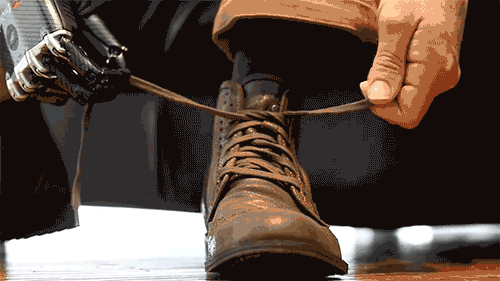
Random Headcanons for my favorite character 🩵 I seriously think abt him a lot and what his life might be like, so this is the culmination of all of my Curly daydreams ~
He's way better at technology now. Like before he acted like a dad who could barely use facebook, but after learning how to use a computer using just his eye movements, you could say he's reasonably tech savvy.
He has a speech impediment. I imagine he couldn't talk on the tulpar because of some sort of paralysis or maybe nerve damage, but with some speech therapy and physical therapy, he learns to speak again. He's still not great at it though, his voice is very soft, so mostly uses his aac device so others can understand him.
His shorter leg gives him more pain than his longer one. He has to use a cane sometimes for that side. (My reasoning is because the shorter leg is the one Jimmy hacked away oops, he's a worse surgeon than Anya I guess)
He's not all that insecure about his appearance, all things considered. Yes it's weird to look in the mirror and see someone totally different, but he just tries to keep good humor about it and stay positive (laugh to keep from crying at times). I'm sure he does mourn his good looks, but most of all he misses his hair. He doesn't think he looks ugly though, and he doesn't talk down to himself for his looks, because he wasn't all that vain to begin with.
That being said, he does actually get pretty upset when people stare at him in public. He doesn't say anything, but you can sense he gets a bit quieter when he notices it. It's worse when it's kids, or (his absolute nightmare) a kid crying or making a comment about his appearance, saying he looks scary. That always makes him feel bad. :(
He carries candy in his pockets. Not for himself, but to give to kids, because he doesn't want them to think he's scary. He actually really appreciates when a kid approaches him and just asks him a question instead of crying or running away. He'll crouch down and let them look at his prosthetic up close, or explain to them how his aac device works. ♡
Even though he hates the negative attention he might get, he still normally doesn't wear sunglasses or a mask to hide his face. He doesn't want to feel like he has to hide, just wants to be a normal guy, which he is..! But he still tries to frequent the same places, to get less attention. For example, the baristas at his favorite coffee shop all recognize him, and the baggers at the grocery store. It makes him feel like a regular joe again. :)
He has an emotional support cat in his apartment ♡ If this is after the Tulpar, then it's for the trauma of losing his crew at the hands of his best friend, etc. If it's an earth au, then it's just to cope with the trauma of being in some sort of accident and having to start a new life, and the hardships of relearning to walk and take care of himself again.
He was already a cozy guy, but now he's even cozier. Loves warm drinks, sitting with his cat, fireplaces, books. He loves books. He kind of liked reading before, especially historical fiction, but he always liked his other hobbies more. Now that it's harder to do his more active hobbies, he utilizes that time to read all of the books he's always wanted to read. I imagine if he worked, he would work at a bookstore :) (Manager of course, he is the Captain, afterall!) ♡
#curly x reader#mouthwashing imagines#mouthwashing headcanons#mouthwashing x reader#mouthwashing#post crash curly#post crash curly x reader#fandom#mine#i am definitely going to add more to this because I love him sm I seriously think abt him all the time#im also writing an x reader fic n ill prob write romantic headcanons too ♡#my fics 🧸
141 notes
·
View notes
Text

id: a 5x5 bingo game labelled “higher support needs autism”, there are some orange details by the caption, as well as an orange arrow with text “@ autisticvelo” pointing towards the ‘t’ tumblr icon at the bottom. the squares are described from left to right, starting on the top row: ‘constant infantilisation’, ‘used to / does elope’, is / was in special education’, need(ed) 1:1 help in school’, restrictive & intense interests’. 2nd row: ‘on disability benefits’, ‘needs help with some or most / all iADLs’, ‘nonverbal / semiverbal (or long-term struggle with speech’, ‘developmental delays / abnormalities’, ‘has / needs a caregiver’. 3rd row: ‘violent meltdowns’, ‘needs help with some or most / all bADLs’, ‘free space (golden infinity sign)’, ‘comorbid physical disability’, ‘gets verbal shutdowns’. 4th row: ‘struggles with hygiene’, ‘assumed to be LSN’, ‘can’t live alone / requires great support’, ‘poor motor skills, ‘comorbid mental illness’. bottom row: ‘sensory seeking / avoidant’, ‘has ID / mild ID / BID’, uses AAC of some kind’, ‘poor saliva control / drools’, ‘won’t ever be independent’. end id
🧡 INFO:
• first point: if anything here is hard to read, let me know and i will simplify it for you, i do not mind.
• if you are able to, please copy the image description i’ve provided above into your post if you repost the bingo game to make it more accessible to visually impaired folks / screen reader users etc. !!
• this is made to include people who are somewhere between L-MSN and HSN, i’m hoping i’ve gotten some things right that many experience, but also remember that these might not be exclusive to HrSN autistic people but in combination with each other they are very common for HrSN autistics.
• if you have feedback on if i got something wrong, i’d like to know so i can learn more and do better next time!
• if a box kind of fits you, it’s okay to count it i think, example: if you are not nonverbal or semiverbal but struggle long term with speech, it’s okay to cross that one. i did add some notes in some boxes.
• i wasn’t completely sure on what terms to use for ID + mild ID and borderline ID, if anything is wrong, please tell me! i’m still trying to learn more so i can be inclusive.
• last point, if you struggle with image descriptions it is okay to tag me and i will write one for you! i am often able to write them even if words are hard and i don’t mind.
🧡 MINE:
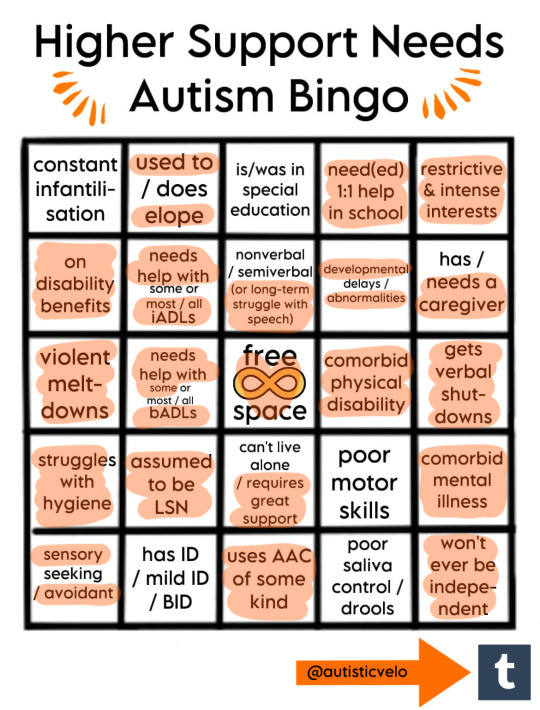
id: the same bingo card as described above, with the following boxes coloured in orange (left to right, starting on the top row): ‘used to elope’, ‘need(ed) 1:1 help in school’, ‘restrictive and intense interests’. 2nd row: ‘on disability benefits’, ‘needs help with most/all iADLs’, ‘(or long-term struggle with speech)’, ‘developmental abnormalities’, ‘needs a caregiver’. 3rd row: ‘violent meltdowns’, ‘needs help with some bADLs’, ‘free space (golden infinity symbol)’, ‘comorbid physical disability’, ‘gets verbal shutdowns’. 4th row: ‘struggles with hygiene’, ‘assumed to be LSN’, ‘requires great support (context: living situation)’, ‘comorbid mental illness’. bottom row: ‘sensory avoidant’, ‘uses AAC of some kind’, ‘won’t ever be independent’. end id
#a lot of words i tend to over explain to avoid misunderstanding but sometimes i write too much#level 2 autistic#level 2 autism#msn autism#msn autistic#l-msn#moderate autism#moderate support needs#hsn autistic#hsn autism#hsn#high support needs#higher support needs#hrsn#hrsn autistic#hrsn autism#lsn msn autistic
74 notes
·
View notes
Text


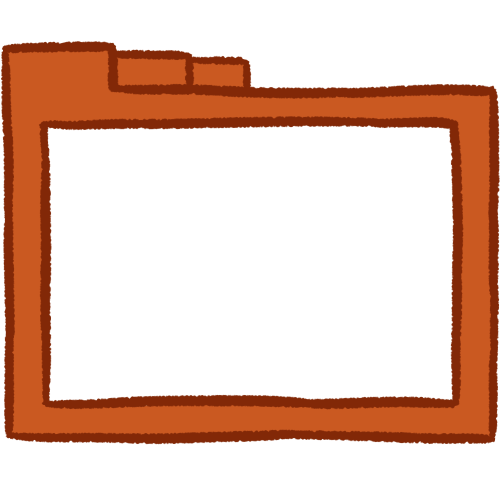
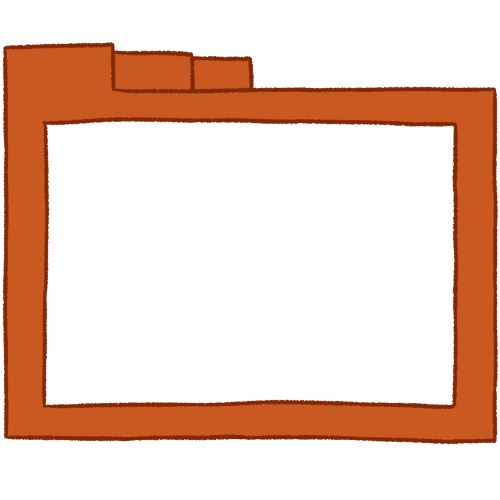
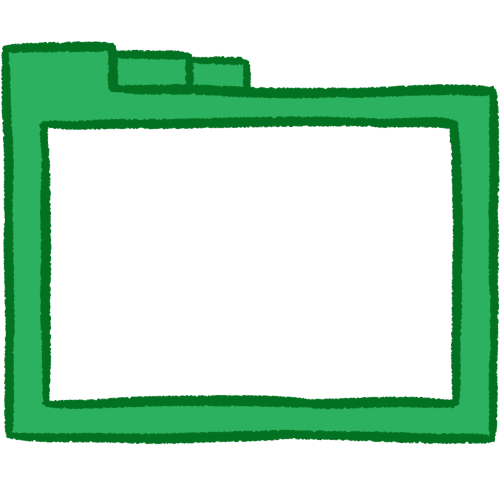
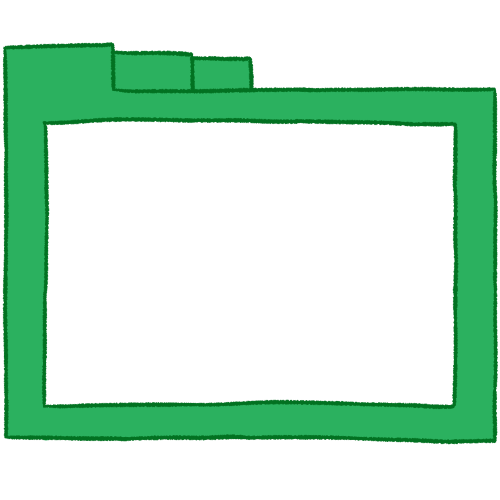

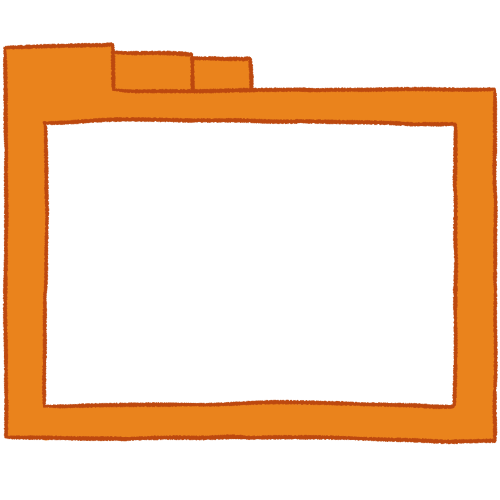




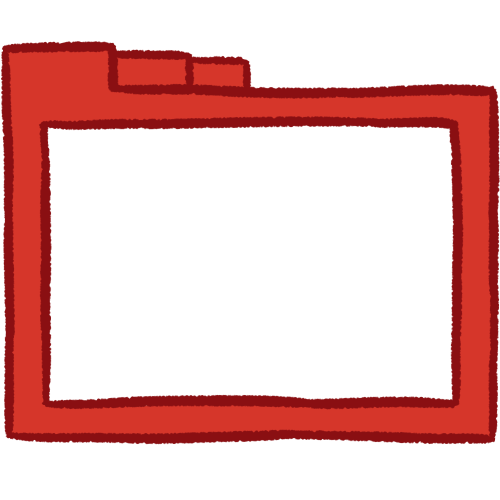
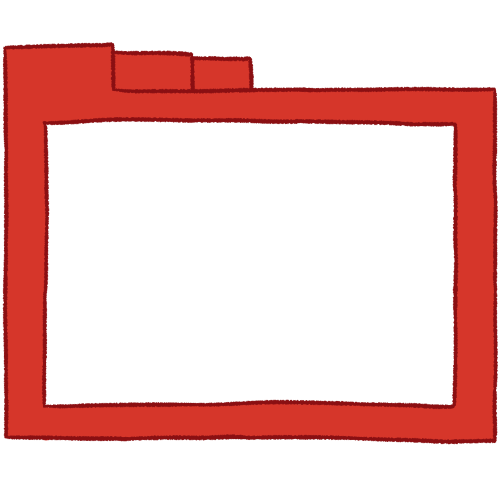



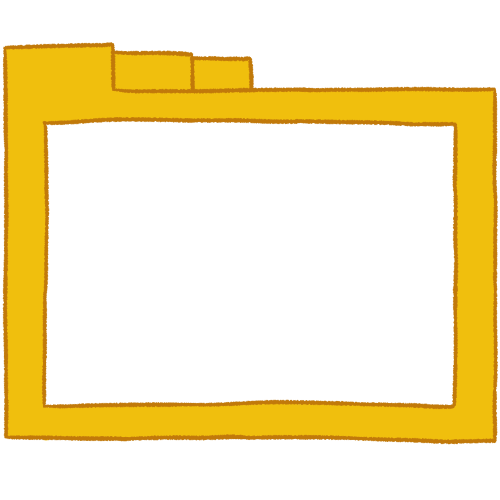
IDs in alt.
These are overlays for our folders to allow for greater customizability. You can put these over any of our new folders and thus have folders that better match your AAC.
To do so, you need to download the folder symbol you want and open it in an image editing software that has layers and transparency. Open the symbol in the editor, and then download the colour of folder overlay that you want. Make sure you choose either the thick or thin version, depending on which one fits the symbol you have. Open the folder overlay in the editing software and place the layer for it above the layer for the basic symbol.
From there, save it as a PNG, and it should be done. Because the canvas size for these overlays is the same as the canvas size for our folders, you should not need to move anything around to make it match.
Here are some examples of overlays used with some of our folders.
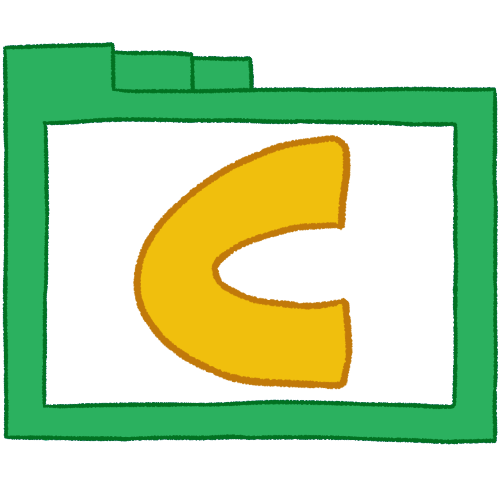

If you are having trouble combining the overlays and folders on your own, send us an ask with the ones you want combined and we will do it for you.
#Emojis#Custom emojis#AAC emojis#AAC folders#petrichoremojis#folders#folder overlays#overlays#folder overlay#overlay#long post#Cisra's tag#We have been meaning to do these for some time. We hope that people like them.
89 notes
·
View notes
Note
I have a character who is nonverbal, intellectually disabled, and uses an AAC device. I'm wondering how I would write down her inner thoughts and monologue? Would she think in full English sentences, in AAC symbols, or something else?
Hi asker,
I will start off by letting you know that there is no single definitive answer for this, but I still have thoughts and ideas.
So, as for the question of would she think in AAC symbols or English sentences, that really depends on your character. It could be either.
Some nonverbal people, but not all, don't think in words at all, but more in images or associations, so this could be the case of your character and might even be part of why they are nonverbal and need AAC. (Some people who aren't nonverbal also don't think in words either, but your character is, so that's what I'll focus on here!)
Your character could also think in words. They might think entirely in words, or partly. They might think in what you would think of as more 'standard' English sentences, or maybe more simplified sentences.
For example, it's common for people with ID to use simpler syntax and/or less abstract language. But language abilities are a wide range, and this can extend to AAC usage. Some people might use more complex sentences, while some might might only be able to use two words in a sentence. Some people might get the hang of pronouns, and some might not. Some people might get the hang of conjugating verbs, some might not. Some people speak more slowly or with more pauses. You have a lot of leeway in how to conceptualize your character's thoughts.
I want to add one thing: a lot of ways that people with ID people can speak are used to make fun of people. Slower speech, simple sentences, not conjugating some words, stuff like that. If you include this, you have to take care to make sure that the message you’re sending by including them is “some people just talk like this” and not “isn’t it so funny/weird/gross/weird that some people talk this way? Let’s make fun of it/focus on how weird and different (derogatory) it is”.
However, the limitations of a written medium is that at the end of the day you will in fact have to use words to write what is going on in her brain, even if she doesn't think in words.
So I would say: focus on figuring out how your character manages language, since there’s many different ways they can, and then once you decide that it might be easier to figure out exactly how to write them. Mod sasza has even more points below!
Hope this helps,
mod sparrow
Hey, I'd consider how your character learned language. If her first exposure was a symbol-based AAC device, there's a higher chance she'd think in AAC symbols than if she first communicated via sign language or anything else that's not a symbol-based AAC device.
I'm fully verbal and actually mostly think in associations and other non-language ways like pictures (though when I'm imagining things like an actual conversation, I do use language). That's why for me and a lot of other people with ID (verbal or not) it can take longer to think of what to say; you need to translate your thoughts to language first.
With your character having much more severe language disability than me, I'd guess that she either used very simple sentence construction or that you'd have to describe her thoughts in a less direct manner (associations or visuals), which will be more time-consuming to write and more cryptic to readers (which makes it realistic, communication with people with significant language problems takes longer, if mind reading was real it would apply to it too).
You should definitely consider the things mentioned by Sparrow; whether she understands pronouns, conjugation, can she differentiate similar words correctly (e.g., love/like, handsome/pretty), etc.
Depending on her level of ID, she might think "I'm hungry" as anything between "Damn, I wish I was eating a burger right now" (complete English sentence) through "Yes food" (in which "yes" means positive rather than agreeing with someone) or "Images of her home kitchen flashed through her head" (simply associating kitchen with the feeling of hunger), to "Two symbols from her board; one meaning 'me' with the second showing an empty plate, went through her mind over and over". There is a big difference between a person with mild ID who might be unable to speak because they can't coordinate their mouth to make actual words but don't struggle with grammar at all, and a person with a profound ID whose entire AAC board is "yes" and "no" (or not even that, but I wanted an example to show what could be someone's existing-but-very-limited language ability).
Obviously some of these are more clunky, some are less so. But the way a lot of nonverbal ID people communicate isn't perfectly clear and direct, and there is a lot of variety in the manner that it shows.
I also wrote this post about speech in intellectual disability that you might find useful. I hope this helps,
mod Sasza
#nonverbal representation#nonspeaking characters#aac users#mod sparrow#intellectual disability representation#mod sasza
74 notes
·
View notes